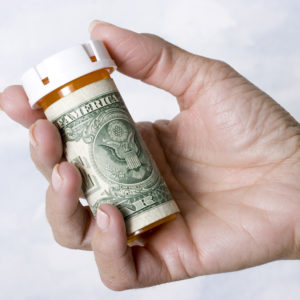COVID-19 has swept through the United States, leaving death and devastation in its wake and preying on vulnerable populations the most.
As the data pour in, we continue to see a widening wealth gap — lower-income workers are being laid off at much higher rates — and increasing disparities in the death toll among underserved communities. As such, it is imperative that programs that protect these at-risk populations work effectively.
Unfortunately, many do not, and the 340B Program administered by the Health Resources and Services Administration (HRSA) is one of the worst offenders.
Although it was originally designed to assist patients in low-income and underserved rural and urban areas, it has been transformed into a large and reliable income stream for for-profit healthcare middlemen and pharmacy chains, who are actively stealing discounts from patients in order to pad their own pockets.
To back up a bit, the 340B Program was established in 1992 to help low-income and uninsured patients obtain low-cost prescription drugs.
Pharmaceutical manufacturers participating in Medicaid provide outpatient drugs to nonprofit hospitals and other care centers focusing on at risk populations, called “covered entities,” at significantly reduced prices —with some reaching as high as fifty percent.
These discounts are then supposed to be shared in some way with patients in need. Guidance issued in 1996 and then revised in 2010, however, now allows covered entities without an on-site pharmacy to contract with an unlimited number of off-site pharmacies.
In theory, the idea behind the guidance was to serve a greater number of vulnerable patients.
In reality, the 340B Program has become a reliable way for major pharmacy chains to use vulnerable patients to score major discounts they then keep for themselves.
For example, if you have severe rheumatoid arthritis (RA) and work at an auto factory, you depend on your $500-per-refill medication to keep you on your feet all day.
But like thousands of other factory workers across the country, you have been laid off thanks to COVID-19. $500 was a big part of your budget, but now that you are unemployed, it is completely out of reach. The worst part? In some cases, you could have only been paying $250 for those drugs before you lost your job.
But why?
Unbeknownst to you, you qualify as a patient of a 340B healthcare provider — hospitals and health clinics — who were supposed to pass along some part of their discounted price — likely a 50 percent discount — to you.
Instead, with the emergence of contract pharmacies cramming their way into the 340B program, for-profit pharmacies — like Walgreens or CVS — use their secret arrangements with your 340B healthcare provider to get deeply discounted drugs.
They then turn around and charge patients at non-discounted levels. For every RA prescription refill they have sold you for $500, the pharmacy and the covered entity have a contract which allows them to pocket the $250 together.
In other words, everyone gets to share in the discount except you — the patient.
With free money from manufacturers as a business model, major pharmacy chains and associated Pharmacy Benefit Managers (PBMs) are pocketing discounts on the backs of patients who can barely afford the medicines they need.
But it gets worse — vulnerable diabetics are not even spared. Insulin is a favorite for middlemen looking to drive a profit.
In fact, since the updated guidance was issued in 2010, the number of contract pharmacies has grown astronomically—from 1,300 to nearly 28,000. Of these, roughly 75 percent are for-profit chains such as Walgreens, CVS, and Rite Aid, or major PBMs such as Express Scripts and Caremark.
To make matters worse, both the Government Accountability Office (GAO) and the Office of the Inspector General (OIG) for the Department of Health and Human Services (HHS) have each acknowledged HRSA’s lack of oversight, casting a blind eye to these schemes to pocket rebates.
The GAO also observed that 340B hospitals are either prescribing more drugs or more expensive drugs—including oncology drugs—than non-340B hospitals. Discounted 340B drug purchases since 2014 have ballooned 232 percent to nearly $30 billion.
All of this is combining to unnecessarily exacerbate the struggle of so many vulnerable Americans during an already-devastating COVID-19 crisis. Fortunately, however, the solution to the 340B problem is simple.
Lawmakers and regulators must ensure that these discounts end up in the pockets of patients, as the original program was intended. This means transparency among 340B (DSH) hospitals and contract pharmacies and proper oversight in determining which patients qualify and how that is distinguished by healthcare providers.
Right now, a few bad apples are undermining what could be an effective program. 340B reforms have the power to make a real impact for millions of Americans struggling to afford their medicines.
Permitting for-profit entities to expand at will under 340B prevents individuals and families from achieving the stability they need to weather the ongoing crisis. We should all be on the same page in ensuring vulnerable patients receive the benefits to which they are entitled.
The alternative is deteriorating health outcomes and drug prices that continue to rise at the worst possible time.

